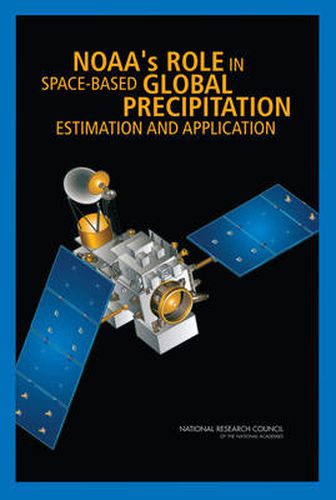Readings Newsletter
Become a Readings Member to make your shopping experience even easier.
Sign in or sign up for free!
You’re not far away from qualifying for FREE standard shipping within Australia
You’ve qualified for FREE standard shipping within Australia
The cart is loading…






The National Oceanic and Atmospheric Administration (NOAA) uses precipitation data in many applications including hurricane forecasting. Currently, NOAA uses data collected from the Tropical Rainfall Measuring Mission (TRMM) satellite that was launched in 1997 by NASA in cooperation with the Japan Aerospace Exploration Agency. NASA is now making plans to launch the Global Precipitation Measurement (GPM) mission in 2013 to succeed TRMM, which was originally intended as a 3 to 5 year mission but has enough fuel to orbit until 2012. The GPM mission consists of a ‘core’ research satellite flying with other ‘constellation’ satellites to provide global precipitation data products at three-hour intervals. This book is the second in a 2-part series from the National Research Council on the future of rainfall measuring missions.The book recommends that NOAA begin its GPM mission preparations as soon as possible and that NOAA develop a strategic plan for the mission using TRMM experience as a guide. The first book in the series, Assessment of the Benefits of Extending the Tropical Rainfall Measuring Mission (December 2004), recommended that the TRMM mission be extended as long as possible because of the quality, uniqueness, and many uses of its data. NASA has officially extended the TRMM mission until 2009.
$9.00 standard shipping within Australia
FREE standard shipping within Australia for orders over $100.00
Express & International shipping calculated at checkout
The National Oceanic and Atmospheric Administration (NOAA) uses precipitation data in many applications including hurricane forecasting. Currently, NOAA uses data collected from the Tropical Rainfall Measuring Mission (TRMM) satellite that was launched in 1997 by NASA in cooperation with the Japan Aerospace Exploration Agency. NASA is now making plans to launch the Global Precipitation Measurement (GPM) mission in 2013 to succeed TRMM, which was originally intended as a 3 to 5 year mission but has enough fuel to orbit until 2012. The GPM mission consists of a ‘core’ research satellite flying with other ‘constellation’ satellites to provide global precipitation data products at three-hour intervals. This book is the second in a 2-part series from the National Research Council on the future of rainfall measuring missions.The book recommends that NOAA begin its GPM mission preparations as soon as possible and that NOAA develop a strategic plan for the mission using TRMM experience as a guide. The first book in the series, Assessment of the Benefits of Extending the Tropical Rainfall Measuring Mission (December 2004), recommended that the TRMM mission be extended as long as possible because of the quality, uniqueness, and many uses of its data. NASA has officially extended the TRMM mission until 2009.